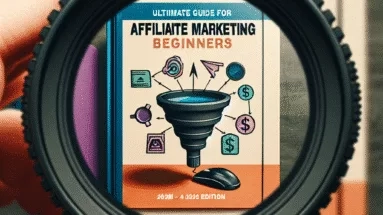
Top 10 Affiliate Marketing Blog Examples You Need to See (2025)
Introduction Understanding Affiliate Marketing Blogs Top Affiliate Marketing Blog Examples Key Features of Successful Affiliate Marketing Blogs

Introduction Understanding Affiliate Marketing Blogs Top Affiliate Marketing Blog Examples Key Features of Successful Affiliate Marketing Blogs

Introduction Why Invest in an Affiliate Marketing Business? Top 10 Profitable Affiliate Marketing Businesses for Sale How

Introduction Understanding Affiliate Marketing Top Affiliate Marketing Best Platforms Choosing the Right Platform Maximizing

Introduction Understanding Your Target Audience Creating Quality Content Promoting Your Affiliate Marketing Blog Measuring

Introduction Understanding Affiliate Marketing Choosing the Right Affiliate Program Promoting Your Affiliate Links Tracking

Introduction Emerging Affiliate Marketing Brands Established Affiliate Marketing Brands Innovative Strategies of Top Brands

Introduction Essential Affiliate Marketing Books Advanced Strategies in Affiliate Marketing Books for Affiliate Marketing Success Stories

Introduction Understanding the Affiliate Marketing Business Landscape in 2025 Strategies to Boost Your Affiliate Marketing Business Common

Introduction Understanding Affiliate Marketing Advertising Effective Strategies for 2025 Analyzing Data and Metrics Building

Introduction Understanding Affiliate Marketing Utilizing Amazon for Affiliate Success Leveraging Pinterest for Maximum Reach

Introduction Understanding Affiliate Marketing on AliExpress Tips for Successful Affiliate Marketing on AliExpress Tools and Resources for

Introduction Understanding Affiliate Marketing Getting Started with Amazon Affiliate Program Maximizing Your Earnings Common

Introduction Understanding Affiliate Marketing The Factors Influencing Affiliate Marketing Average Income Projected Trends for 2025

Introduction Understanding Affiliate Marketing The Affiliate Marketing Amazon Sign Up Process Maximizing Your Affiliate Earnings

Introduction Embracing Affiliate Marketing AI Strategies to Leverage Affiliate Marketing AI Challenges and Solutions in Affiliate Marketing

Introduction Understanding Affiliate Marketing Apps Top Features to Look for in an Affiliate Marketing App Best Affiliate Marketing Apps for 2025 How to Choose

Introduction The Rise of AI in Affiliate Marketing Emphasis on Data-Driven Strategies The Shift to Micro-Influencer Partnerships

Introduction Choosing the Right Subreddits Creating Engaging Content Building Relationships with the Reddit Community Measuring Your Success FAQ Conclusion Introduction In 2025, leveraging affiliate marketing reddit is becoming a game-changer for many online entrepreneurs. Reddit, with its vast

Introduction Top Affiliate Marketing Examples in 2025 Successful Strategies from Affiliate Marketing Examples Challenges in Affiliate Marketing Examples Future of Affiliate Marketing Examples FAQ Conclusion Introduction In 2025, understanding effective affiliate marketing examples can drastically improve your digital

Introduction Understanding Affiliate Marketing Platforms Top Affiliate Marketing Platforms for 2025 Choosing the Right Platform for You

Introduction Understanding Affiliate Marketing Getting Started with Affiliate Marketing for Beginners Strategies for Success in Affiliate Marketing